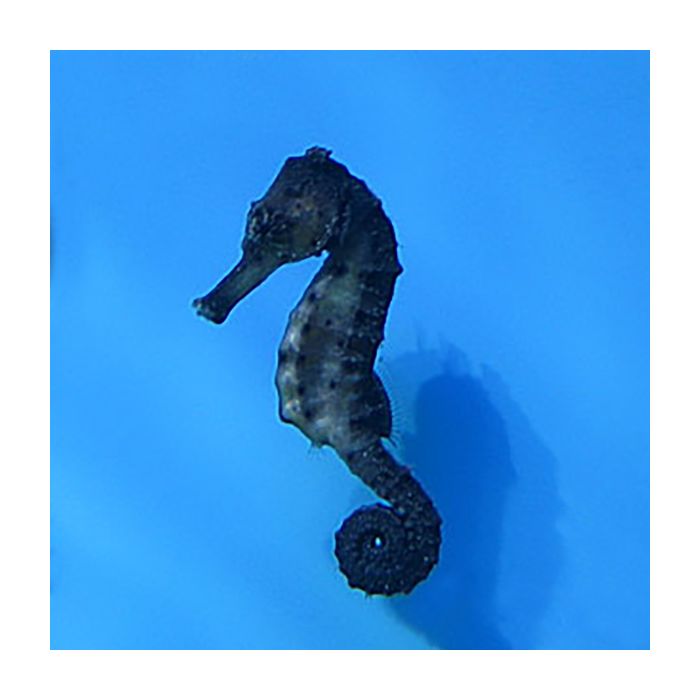Black Seahorse (Asia Pacific)
The charming Kuda seahorse has an adorable stocky body and a clean silhouette. It is typically available in a deep black color, sometimes with a modest amount of striping or spotting. Rarely some individuals may be a dusky yellow color. It grows up to 6 inches - we recommend an aquarium of at least 30 gallons.
Seahorses are gentle fish related to pipefish. They do best in a dedicated aquarium free from boisterous or aggressive tank mates. Dragonets, pipefish, assessors, jawfish, and small gobies, blennies, and cardinals make good tank mates. We recommend avoiding hawkfish, dottybacks, angelfish, and any predatory or large mouthed species.
If given enough space seahorses are very friendly with each other and may form pair bonds in the aquarium. When breeding the female will deposit her eggs into the male's belly pouch where he carries and protects them until they hatch. Males and females look similar; however female’s bellies come to an abrupt stop at their tails, while the males pouch creates a more streamlined appearance.
Seahorses all have a prehensile tail and ample structures which may be used as anchor points are necessary, such as sea grasses, gorgonians, and Manzanita branches. Stinging corals and hydrocorals should be avoided. Seahorses are affectionately known as ponies. Their colors are often genetically determined, however a well-lit and colorful environment will help them brighten their own colors.
Seahorses are coral and invertebrate safe, only feeding on very small crustaceans such as copepods and minute shrimp. Wild fish may first need to be offered live food, however many species are now offered tank raised and are trained to eat frozen food. Seahorses do not take to dry foods, so a variety of high quality meaty items should be offered such as frozen Mysis shrimp, enriched brine shrimp, Tigger pods and Calanus. Seahorses should be fed a minimum of twice daily. A well established aquarium is recommended, preferably with a refugium to aid in supplementing the main aquarium with live prey items. Seahorses feed by picking food items out of the water column in a slow and deliberate manner.
Because of the delicate nature of seahorses we recommend careful attention be paid to eliminate stinging or dangerous animals in their aquarium, such as Aiptasia and Majano anemones, rouge crabs and predatory hitch hikers, and aggressive corals such as galaxy, bubble and Euphyllia sp. to name a few. Most crabs except porcelain crabs may present a danger, as do large shrimp such as the coral banded.

